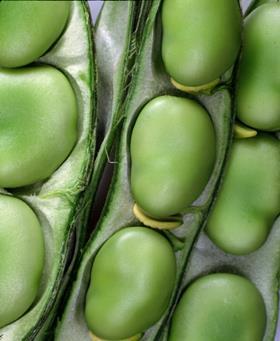
A typically quiet time of year for vegetables has been disrupted recently following shortages in English brassicas and beans.
The category’s 7.2 per cent value decline over the last year has been primarily driven by heavy promotions in brassicas and potatoes, [KWP, w/e 21 June 2015], which has been compounded by recent warm temperatures leading to shortages in broccoli and cauliflower.
Total Produce’s Charlie Hicks explains: “A dry spell at the end of July had a big impact on British broccoli and cauliflower crops, volumes dropped away and prices shot up to more than double the seasonal norm. Recent rain has helped, and we hope supplies and prices will be back to normal by the middle of the month.”
But the shortage may have been welcomed by growers, according to one supplier, as they have been able to sell all they can grow. Mick Jones, managing director of Evesham supplier EuroFresh, says: “Cauliflower and calabrese is usually very quiet at this time of year, but they have been £10 a box recently. This is mainly because the early crop came in together, prompted by the warm July and recent heatwave. I prefer it like this as we can sell more than we can get. It’s also better for growers as what they’re growing they’re selling.”
Tight English supply has seen firms look abroad to fill the gap, with one supplier reporting a “dramatic” increase of Spanish kale to the UK. Senior buyer at foodservice supplier Reynolds, Matt Jones, says: “There had to be more imports this year, following last year, which was so difficult for so many categories. There has been a dramatic increase on Spanish kale, black cabbage and purple sprouting. There is a slight shortage on broccoli, which will last another 10 days or so, down to the warm weather that has slowed down growth and started seeding early.”
Jones believes kale demand will remain high for “at least another two years”, and notes there is lots of varietal development around Cavolo Nero. “Anything baby is also seeing good demand – I was at a trial site recently and there is some really good eating quality on baby kale,” he adds.
David Parriss, managing director of Hillfox Produce, has also looked overseas for brassica supply. “Broccoli and cauliflower has gone short, and I’ve been importing some broccoli from Spain. There’s been a supply gap in the market which is very unusual for summer,” he says.
Branded brassica Tenderstem has not been exempt from recent supply issues, as master licensor Coregeo’s Michelle Toft notes that there have been “mixed weather conditions” in July in the UK, and heavy rains in import producer region Kenya.
“Because of the mixed weather conditions both the UK and Kenyan availability has been slightly affected, but because our licensees have managed availability, any shortage was minimal,” she says. Growing ahead of the wider vegetable market, Tenderstem is seeing around 20 per cent growth year-on-year and Toft notes that marketing activity about usage has had a “direct impact” on sales.
Other seasonal staples in the vegetable category include runner and broad beans, where poor growing conditions mean demand is currently outstripping supply. “All beans are tight at the moment. Fine beans from Kenya have been very tight over the last two to three weeks, as a result of colder weather and less growers overall,” says Mick Jones, who adds that beans are one of EuroFresh’s biggest lines. With the spotlight on residues making life difficult for African bean exporters, Jones believes there are opportunities for British growers to produce more beans, although he concedes it is a labour-intensive category.
Elsewhere, roots are a little bit behind, according to Matt Jones, who notes that everyone is chasing larger carrot sizes – current crops are all small to medium due to the late season.
In a category facing heavy deflation on mainstream products, vegetable suppliers are trialling niche lines to add value. Jones says Reynolds trialled round courgettes as a starter in Pizza Express a couple of years ago, and believes the trend for quirky lines is “coming back round again”. “It’s absolutely a good time to be trialling niche lines like this. Brands are trying to find their own identity so there is demand out there,” he says.



